Archives
A plumbers view – Super Bowl 2016
Sunday, February 7th was Super Bowl 50 Sunday in San Francisco. By now you may know The Denver Broncos beat the Carolina Panthers 24-10 at Levi’s Stadium.
What’s that got to do with plumbing? I hear you ask. Well plenty; according to the Scott Tissue company, the toilet is flushed more during halftime than at any other point during the year. That’s 90 million flushes, using 350 million gallons or 1,323,000,000 litres of water, which is the same amount of water that flows over Niagara Falls in seven minutes.
Now, that is…..a Super Bowl!
I’d like to know how many blocked drains happened on Super Bowl Sunday!
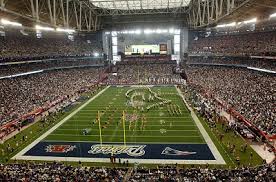
Water Saving Tips for your Garden

Did you know about 35% of household water usage occurs in the garden?
In my daily rounds the common theme is how the spring has unfolded, the gardens are in bloom, the Jasmine flowers have come and gone. We’ve had very little rain lately on the coast but, after recent temperatures reaching 36 degrees, our gardens are dry.
It helps if you know the needs of your plants. More plants die from over watering than lack of water so don’t drown ’em.
So here are a few water saving Do’s and Dont’s:
– Do choose water efficient plants and grasses.
– Do mulch your garden.
– Do install a drip feed system to water the gardens and lawns. It’s pretty easy to do. If you need a hand just ask us.
– Don’t water in the heat of the day. Heat = Evaporation and the watering process can burn your lawn and plants. Water early or late. Cool is good!
– Don’t assume the garden needs watering. Check the soil to see whether its dry before turning on that hose.
– Don’t water for long periods if your garden slopes. The water just runs off. Allow it to soak in!
– Don’t water on windy days especially with sprinklers and fine sprays. Wind increases evaporation.
– Don’t water everyday, if its practical give em a drink twice a week to encourage the roots to grow deeper
– Don’t water for 1-2 weeks after a good soaking rain.
– Don’t forget to drink yourself. Personal hydration is even more important!
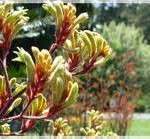
Just Add Water
Everyone is talking about the upcoming summer like its the imminent return of an old old friend. My sunrise learn-to-surf visits to the local beaches find them full of boys and girls and boot campers getting buffed for the summer unveiling of the new bod. And everyone is drinking water out of water bottles.
Now, hydration is not a new theme and the sweat produced to work that body needs to be topped up with good old H2O, Adams ale, water, the universal solvent. Its well known that people who engage in strenuous physical exertion or live in a hot climate (that’s us people) need to drink plenty of water.
After swallowing more than my share of the Tasman Sea most mornings, I guzzle water from the beach taps to re-hydrate myself.
The human body is anywhere from 55% to 78% water depending on your body size. A simple rule of thumb, 2/3 of our body consists of water.
Did you know that your tissues and organs are mainly made up of water?
• Muscle consists of 75% water, Blood consists of 83% water, Bone consists of 22% of water, Brain consists of 90% of water.
• The recommended amount is 8-10 glasses of aqua per day.
• So remember, if your gonna work it, you have to re-hydrate it.
• Dr Dave says, Drink more water!
Help! Where does my Hot Water turn off?
“HELP!“
“My water heater is spitting out hot water and steam. Can you get over here Urgently?” “I don’t know how to turn it off and I think it’s going to explode!”
Monday morning brought a call from Deborah in Randwick. It sounds like a job for The Lone Drainer ……and Pronto.
Of course we were able to rescue Deborah. We replaced the water heater and the gas and water shut-off valves that controlled the unit. But, how many people don’t know how to turn off their water heater?
The image below shows where to shut off the water and gas supply to the heater. Why don’t you practice turning the water heater off when it isn’t urgent?
If you need help Call us 02 9664 4990
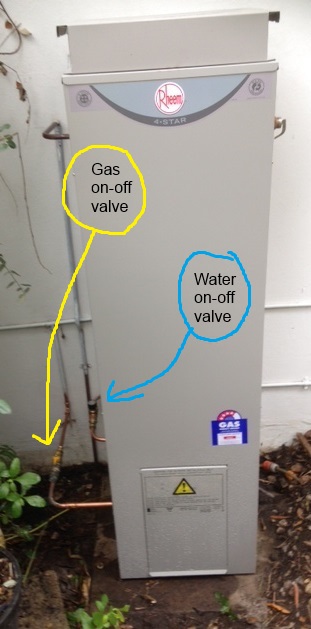
Be careful what you put in your toilet!
Last night we had an emergency call out to a client that we had helped recently. But first, let me paint a picture.
Two weeks ago “Kath”, who lives in a 1920s Coogee building had a blocked shower. Kath said it had been slow to drain since she moved in 6 years ago. A little investigation revealed the original pipes ran through the concrete floor and were corroded internally. Corrosion is one of the drawbacks of living so close to the ocean.
Anyway, The Lone Drainer and Pronto Super-heroes Leigh and Chris, got her shower running “better than ever before”. In fact Kath rang our office to compliment the boys on their Ps, Punctual and Professional.
So I was surprised to get her evening call-out. It turns out her toilet was blocked! But the shower and basin were draining better than ever before. The building has a 2 pipe system; the shower, bath, basin and kitchen sink run down one pipe, while the toilet waste goes down the other.
After a little investigation we found there were tampons caught on the corroded inside of the waste pipe. It was reasonably simple to clear the blockage. Although Kath was a little embarrassed we assured her the best way to prevent it happening again was to follow this simple rule.
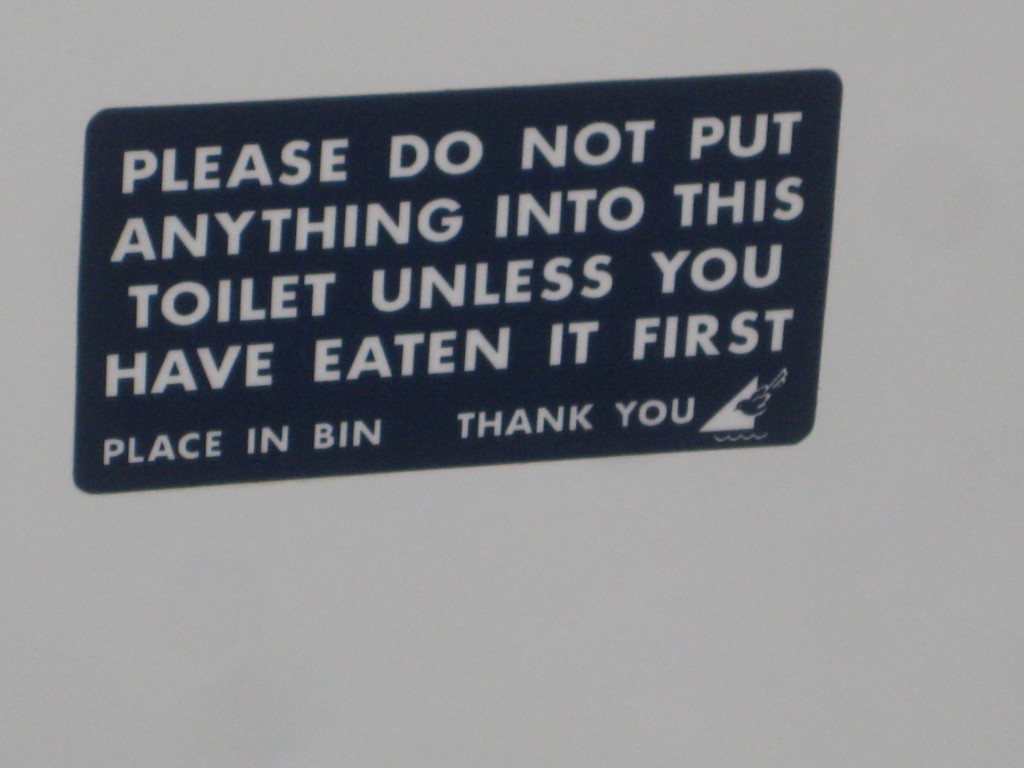
Stop Leaking Taps
As a plumber, the majority of house calls I make have to do with leaking taps. Obviously in most cases it is correct to call a plumber but some times we are called to houses to carry out a simple plumbing job that takes five minutes which could have easily been completed by anyone with a little know-how.
Here are a few pointers that can help to avoid problems like these:
- Treat taps gently. They should be turned off with thumb & forefinger. If you are having an arm wrestle turning your taps off, stop it!
- Try to repair a dripping tap if you can. Always turn the water supply to the house off first!
- Simple repairs can be done by anyone. Don’t forget the o-rings, tap washers, tap seats and fibre washers. Lubricate them all.
- There are so many types of taps available today, even the pros need to seek advice.
- There is no shame in not being able to repair a dripping tap. I have seen plumbers who are grown men cry over leaks like these.
Flush with Facts #2
August is the month of the good toilet flush!
Did you know the dual flush toilet cistern was a 1980 Australian invention by Bruce Thompson, an employee of Caroma?
The dual flush toilet cistern saves 32,000 litres of water per household per year. In 2014 most modern toilet cisterns have an internal overflow tube, so if your float valve doesn’t shut off, the water runs straight into your loo, rather than overflowing onto the floor….. So the single flush toilet cistern should be a thing of the past!
Stormwater drain blockages
Send it down Huey! As Sydney gets through another day of torrential rain and some eastern parts of this country are getting their best rainfall for more than a year, its important to keep your stormwater gutters, downpipes, grates and drains clear.
My own roof gutters were overflowing yesterday ’cause the leaves from our deciduous tree were blocking our down pipes.
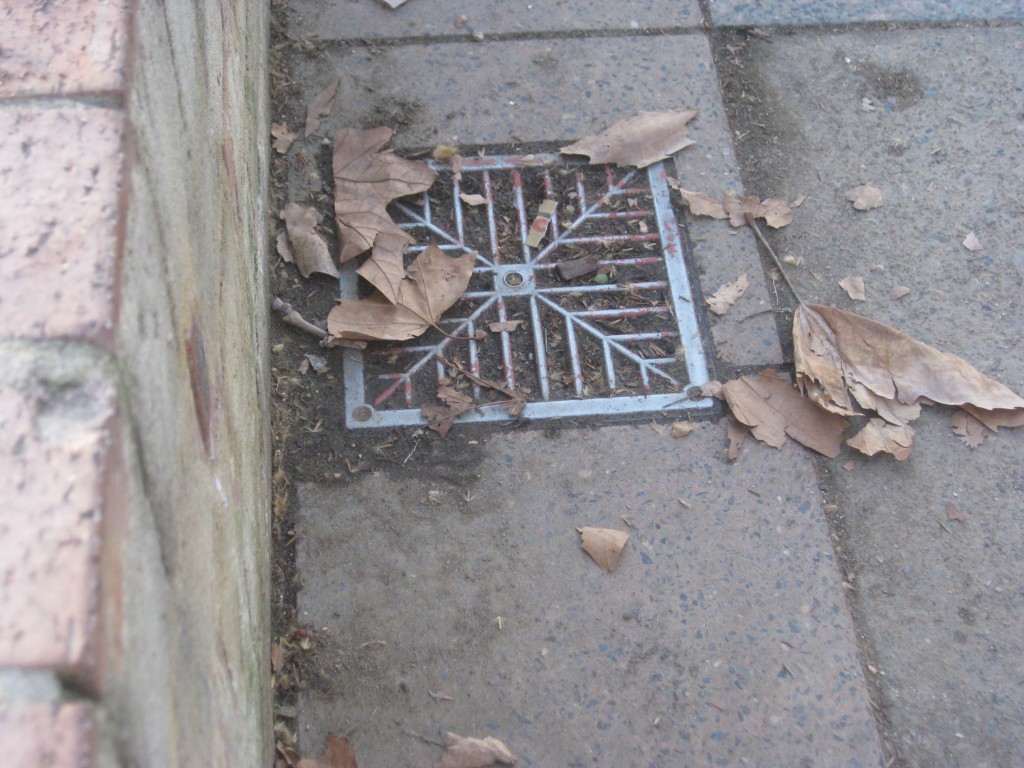
3 Tips for Healthy Hot Water
Who had a cold shower this morning?
Winter makes the need for hot water a high priority. If you think your heater is under performing do this quick water heater health check.
1. Check the colour of your water. If its brown, your water heater has a buildup of sediment or rust.
2. Check your Temperature and Pressure Relief valve (like the one shown below), pull the lever; it should spurt out water till you let go of the lever. If it dribbles afterwards, it needs attention.
3. Does the stop valve work? Try turning it off, test the water at your hot taps and turn it back on. Ideally it should stop the water flow through the heater.
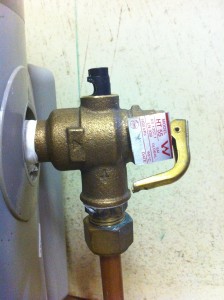
Whether your water heater is gas or electric, storage or continuous, check it regularly.
If your hot water runs out get your friendly plumber to check it over
Using a public toilet. Should I hover or cover the seat?
Here is a little fun on Friday! Have a great weekend, and wash your hands!
Plumbers love your pets
Your Dog and Dealing with Internal Renovations
Dogs and cats find renovations very stressful: there are strangers in their home changing things, moving things around and disrupting their routine. Some of the risks involved range from escape behaviour, bad dog behaviour, territorial behaviour and the general stress of strangers and loud noises in their space. You also have the risk of injury or the potential of your fur baby being exposed to toxins. Unlike the tradesman, there are no protective masks or clothing for your pet.
Lead and Asbestos, as most of us know, are bad for us, but it’s just as bad for our pets. Years ago it was common for house paint to contain high levels of Lead in addition to Asbestos in our walls. Startlingly before 1970 most paints contained up to 50% lead. Disturbing the paint during renovations can be risky business and you need to ensure you keep yours, and your pet’s, exposure levels down and leave this sort of job to the experts!
Lead and Asbestos will only resurface if it is disturbed; your tradie could unintentionally do this and create a risk. If you’re renovating be sure to follow these simple steps to make sure your family and pets are safe from Lead and Asbestos.
Step 1 – Look into how much asbestos you will have to work around and whether your paint contains lead. The most likely places to find lead paint will be on the kitchen and bathroom cupboards, window frames, skirting boards, doors, architraves, picture rails, exterior walls, gutters, metal surfaces and fascias.
Step 2 – Use the appropriate tools and equipment for the task at hand. Protective clothing is a must! A respirator, disposable coveralls, disposable overshoes, a hat, and gloves will protect you from any dust containing lead. Find somewhere to keep your pets safe while the renovations are happening, a relative, friend or a doggy daycare is always a good idea to get the pets out of the house.
Step 3 – Prepare fully for interior or exterior work. Get experts to deal with Asbestos as there is a multitude of legislation governing the tampering and removal of Asbestos.
Step 4 – Deal appropriately with paint containing Lead. Use techniques that minimise the creation and dispersion of dust or fumes. Large portions of dust or wastewater that contain lead can contaminate the house and garden so it is best not to dry sand or use abrasive blasting. It’s always safer to avoid creating the dust as opposed to cleaning it up after as dust containing only 1% lead can be harmful.
Step 5 – Use a 3 bucket wet cleaning method to eliminate any left over chemicals.
Step 6 – Dispose of contaminated waste appropriately.
This Blog Post was kindly supplied by the Friendly Team at Paddington Pups, Queensland’s Number #1 Doggy Daycare Centre.
Washing machines & dishwasher maintenance
With 3 growing boys living at home who eat like there is no tomorrow, between playing rugby, cricket and doing patrols at Coogee Surf Club, we have plenty of dishes to wash up every day as well as laundry to do every day, so much so, that both appliances broke down at the same time!
Yes it happens to plumbers as well!
So we had our brightest plumbing apprentice just install a new dishwasher and washing machine and it made me aware of the importance of these water appliances and how we should maintain them.
1. Their hoses are rubber, so with hot water they perish and may rupture; so check them regularly.
2. Many people turn these control valves or taps off at the end of every wash. In our house that would be impossible.
3. Turn taps off when going on holidays. Don’t forget to turn them back on when you return.
Just recently, our emergency plumbers rescued a young mother who had been to Adelaide for three weeks. The hose feeding her washing machine ruptured causing many dollars worth of damage:
- Her washing machine shorted out electrically (needs a new machine).
- The laundry/bathroom was covered in mould from the steam (needs repainting).
- Assorted bits and pieces of furniture were damaged.
- The carpets in the hallway were waterlogged.
- The parquet flooring at the end of the hallway had buckled and would need major repairs, then re-sanding and staining.
- Not to mention the aggravation of removing all furniture and of course taking the young children away from the home for several days whilst these procedures were carried out. The fumes from the floor staining were intoxicating.
Antonio Gaudi water conservationist
Barcelona 2010
To visit Park Guell and see the home and creative brilliance of Antonio Gaudi is a special treat.
Gaudi created Park Guell for the citizens of Barcelona. It has gardens and homes with a view of the city and the Plaza.
The Plaza is a meeting place for the people of the city and the brightly coloured mosaic seating around the manmade plaza had a secondary purpose. The dry Mediterranean weather usually meant excess water used on something as soothing as a fountain for the citizens and visitors to the city was a waste of water. That didn’t phase Gaudi.
The water catchment created by the Plaza was a brilliant idea to collect any rainwater that fell, and through an underground filter and the storage system, the rainwater was then piped to the mouth of a Mosaic dragon lying in a garden with a fish and lily pond at the bottom of the beautiful staircase.
The ergonomic design of the seating around the Plaza, which was beautifully decorated in mosaics, was incredibly comfortable to sit back, relax and talk with friends and family.
Gaudi’s design allowed any water from those brief showers to fall to the back of the seating and then get channelled off quickly into a gutter on the outside of the seating and then dispersed to the dry garden areas below through a series of “spitters” hand carved in stone.
Absolutely Beautiful!

Park Guell Lion

Rain lions
Hot Water Heaters are Big ticket items $$$$
Do you know:
- Where is your hot water supply coming from?
- Is it electric or gas? Can you turn off the supply safely?
- The pressure relief valve (T&PR valve), usually near the top of the heater, should be eased quarterly; it does drip water under normal circumstances, but should not constantly be running.
- Turning your water heater off whilst on holidays saves electricity and gas. The unit will heat and cool whilst you’re away, wasting energy & your money. Turn it on when you return, have a coffee, unpack, say hi to neighbours etc. The water will be hot before you know it
- Don’t forget to shut off the water valve. Storage heaters are under pressure. My brother in law had his water heater burst about the time he boarded a jet for the islands. After 2 weeks, the damage to carpet, floorboards, furniture, paint added up – $$$$!
- Flexible water connections on the inlet and outlet of your water heater are dangerous. Check if you have them. If you do, I strongly recommend you have them removed and have the connections redone in copper tube and brass fittings. I guarantee these flexis will rupture and if they are indoors the damage they can cause is huge.
- Rusty water coming from the unit is a sign of age and potential disaster. Don’t ignore it!
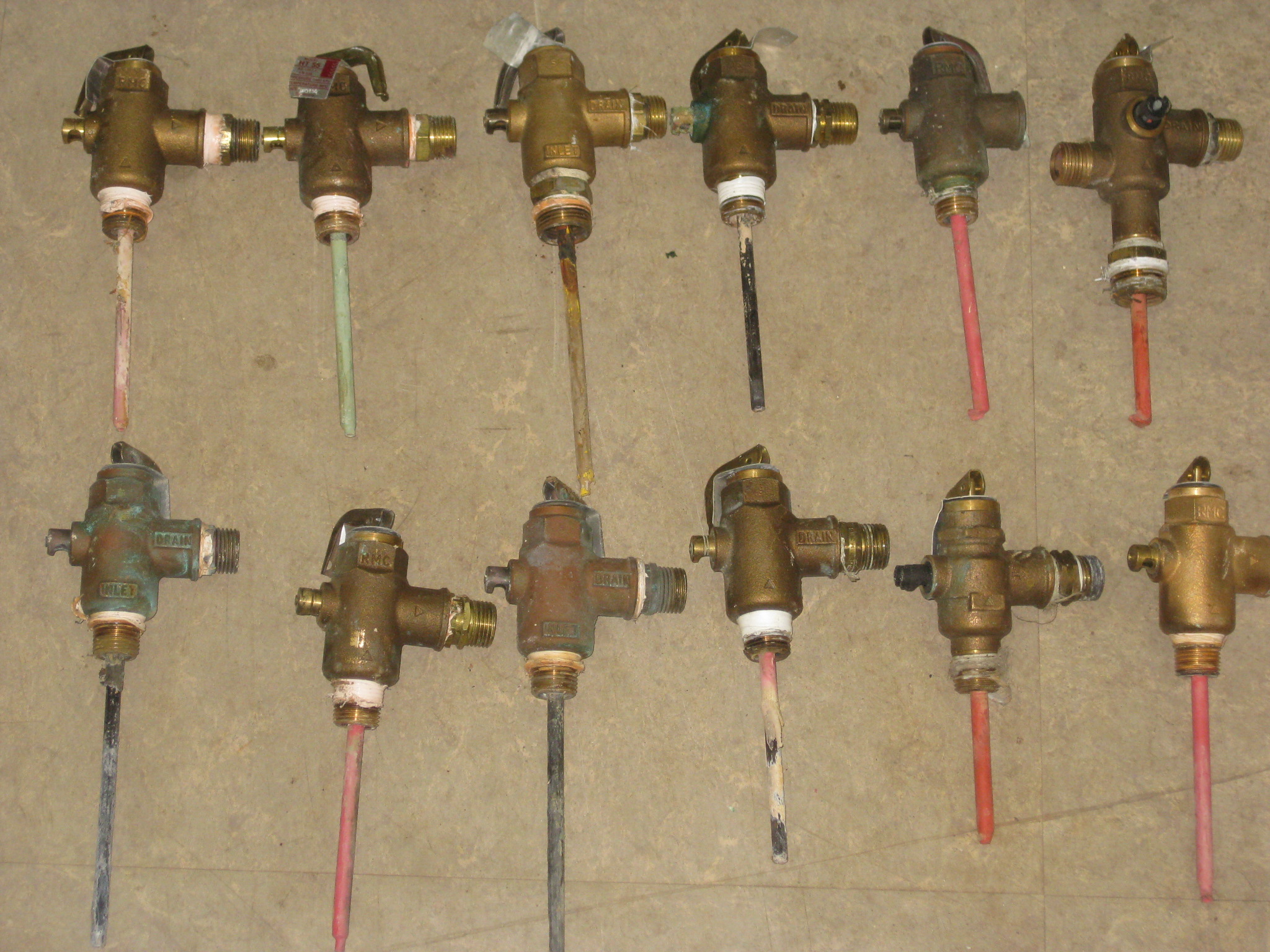
Temperature & Pressure Relief valves. Don’t forget to activate them.
How to Keep Your Restaurant Clean
Simon from ‘Specc’ Restaurant in Clovelly, tells us how ‘Grease Release’ helps him easily keep his busy kitchen free of fats, oils and grease, leaving his kitchen surfaces clean enough to eat off. Grease Release also keeps the drains from the kitchen sink and floor drains that run to the restaurant grease trap flowing freely. It also keeps the grease trap easier to manage because Simon can clean up any greasy surfaces with cold water.
Our family eats at Specc regularly. Its vibrant atmosphere, fantastic location right near Clovelly Beach in Sydneys Eastern suburbs, and a menu that sets the tastebuds tingling, keep us coming back time and time again.
Check out Simon and Specc at www.specc.com.au
Burst water hose floods house.
It’s Saturday night in the city and we received an emergency call from a long term client, “HELP we have a tap over the kitchen sink that is leaking lots of water and flooding our kitchen.”
Now on a Saturday night, this sounds like a job for “The Lone Drainer and Pronto“! We were at the house within 30 minutes to repair the leaking tap!
The kitchen sink mixer tap had exploded, gushing water everywhere, and our clients who were having a peaceful dinner, could not turn the water off!
The 2 valves controlling hot and cold water supply to the kitchen sink flickmixer style tap, and the water meter at the front of the property could not be turned off. Both the taps had seized and the water just kept running out all over the kitchen!
Sydney Plumbers love our drinking water!
The interest over the new Sydney water desalination plant just continues to grow.
After blogging 2 weeks ago about the taste of our drinking water, a topic that is very important to me, we have been contacted by lots of people who also have an interest in our Sydney drinking water. I believe we have here in Sydney Australia, one of the best water supplies in the world and now that we have the Desalination plant, it does secure our drinking future.
Most of our clients have shared with us their thoughts on the flavour of our drinking water, the colour of the water, the taste and smell of the water; and you are all correct.
Just make sure, if you have leaking taps or running toilets, you have them repaired as soon as possible.
Save water where you can and keep drinking water. It makes you feel alive!
Toilet Leaks Waste Water
How Much Water Is Wasted When I Continue To Let My Toilet Leak?
When a meter’s flow indicator moves and you know that all the water outlets are off, both inside and outside, you can be sure that there is a leak somewhere in your lines. The continuous drip of a leaky tap, or a constantly running toilet, will add dollars and cents to your water bill in a hurry. When this happens, it is time to call for toilet plumbing services.
It is estimated that $145.00 is added to your water bill annually if the toilet continues to run after flushing. This is money you are paying out that you don’t have to. The insides of the toilet cistern are inexpensive compared to the extra money you pay because your toilet is constantly running. So it makes sense to acquire plumbing services Sydney to fix your leaky toilet or tap.
The constant running of a toilet not only wastes water but will increase your utility bill over a period of time. That extra money, not to mention the water, could be used more advantageously.
Let’s think about the water that is wasted when you continue to let your taps or toilet leak.
Wasting water is no longer something you can do and not feel guilty about it. The shortages around the world can be helped if everyone keeps their equipment in good working condition, and if we are all mindful about how we use water and how we can prevent wasting water that can be better used somewhere else.
It would not be hard to put together a list of items you could purchase with the money you are paying for the wasted water from the leaky toilet. There are many ways to spend that $145.00. Whether the money is used for a needed item or for leisure, that money can be better spent on something that you will have for a while or something you will enjoy whenever you want to. Therefore, it is well worth it to hire plumbing services to fix your leaky toilet.
So many people can be helped by you simply ensuring that you do not waste water negligently. Neglecting to take care of your household can cost you hundreds of dollars in a short period of time. Lately, the economy makes us spend thriftier; hopefully it also teaches us to be more conservative of the natural resources that are limited worldwide. Contact one of the plumbing services Sydney to make sure you are doing your part to conserve water and put the water where it will do the most good.
Plumbing Sydney – The Advantages Of Quotes From Plumbers
There are Advantages of acquiring Quotes and Upfront Pricing from Tradesmen/Plumbers with Reliable Reputations Before Starting Simple Maintenance Jobs.
Home owners are often faced with the dilemma of trying to fix their plumbing themselves or calling in a professional plumber to get the job done. The advantages of quotes, upfront pricing and a reliable reputation can mean all the difference in the world in the amount you end up having to pay for the work done.
When looking for reputable plumbing services, check with the Better Business Bureau and with the certification board that certifies services for plumbing in Sydney. All the professionals are certified for plumbing Sydney.
Some of the things you should expect when choosing a plumber is convenient scheduling of service technicians along with a notice of their expected time of arrival. You are better able to maintain your schedule when you know what time the service technician is going to be at your door.
You should also expect a service technician to be well groomed and wear clean boots/shoes or protective booties inside your home in order to protect your floors. A complete plumbing system investigation should take place with a provision of price before the job is started. A couple days after the service call is made to your home, there should be a follow up call that checks to make sure everything is working just the way it is supposed to.
On the occasions you need to call in professional plumbing services, make sure you get estimates and a repair plan that specifies that no work will be done without your authorization and you should, if you can, get a second opinion if there is any more work to be done. Having to search for plumbing contractors in Sydney may seem like a daunting task, but if you just follow a few simple steps you can get your work done professionally and have peace of mind knowing you shopped around, and checked out the plumbers credentials.
One of the advantages of having an upfront pricing is that you are better able to budget for the cost of the repairs or new plumbing that may have to be installed. Knowing ahead of time what something is going to cost enables you to ensure that only the work that needs doing will be done, and anything extra will be placed on a separate estimate and quote.
It is understood that at some point in time something in the sewer system and plumbing system is going to go wrong after years of use. Taking care of the maintenance of your home is much easier when you are doing business with certified professional services for plumbing. As you look in the phone book or search engine for “Plumbing Sydney” keep in mind the things that a quote with upfront pricing can do for your budget and your peace of mind. It is always easier when you know what to expect from the plumbing services you are going to get.
Upfront pricing helps prevent “cost over-run” when the plumber seems to continue to find one thing after another wrong and wants to charge for each and every extra procedure. Don’t get ripped off, check credentials, get an upfront quote, and make sure you know exactly what the plumber is going to charge you for.
Blocked Drains…Minimise the Pain
If you have a history of blocked drains at your home, you should read the following to learn more about your drains.
Get a drainage diagram from Sydney Water and keep it handy; it’s part of your contract of sale.
- Tree roots will grow into your sewer, year in year out, through the joints in earthenware pipelines or where they meet PVC pipes. They will come back!
- Don’t ignore gurgling drains or siphoning pan outlets. They are a sure sign of a blockage.
- Investigate smells, they usually mean trouble.
- All plumbing fixtures, WC, basin, sink, bath, laundry tubs, kitchen sink etc. have an S or P trap, or water seal underneath. This trap is not to catch your diamonds (which we have successfully retrieved in the past), it is there to prevent the smell of the sewer coming into your home. If you have a bad smell in the bathroom or laundry it may be because the water seal in the floorwaste has dried out. This means the floorwaste is acting as a direct vent off the sewer and that’s why it smells. So an easy fix is to get a torch and see if the floorwaste is dry; if it is, get a bucket or jug of water, add disinfectant or bleach and tip it in. If the smell persists, it’s a job for the Lone Drainer and Pronto!
- Remove hair from your shower or bath drains. Bin it, burn it or flush it.
- Keep a simple sink plunger in your home tool kit.
- Don’t put sanitary products (tampons, napkins etc) or dental floss down the loo. Dental floss is like fishing line, very tough, it wont break down, it will cause a blockage!
- Only use toilet paper. Not tissues or newspaper. (Try the tissue-toilet paper test. Put them in a bucket and run water over them. See what happens).
- Toilet deodorisers that hang over the edge of your loo are not recommended! They fall in and no one wants to put gloves on and retrieve them, so they flush them down and guess what? They will help put a plumbers kid through uni!
- If you do hire an electric eel and try to clear a blockage yourself, exercise caution, they are a dangerous weapon in the hands of a novice and may cost you more money than you save!
If you need any help with this go to https://www.thelonedrainerandpronto.com.au/blocked-drains.html
HELP! I’ve got a burst pipe in my bathroom!
This post is relevant to a Randwick plumbing emergency that happened yesterday.
We had an SOS from a long term client “Joan”.
You could hear the panic in her voice. “Come quickly, we have a burst water pipe under our vanity basin and we can’t turn the water off” screamed Joan.
“Is your floor waste drain clear?” we asked. “Yes” Joan replied!
We told her how to minimise the water damage by shutting the cupboard doors and direct the gushing water towards the floor drain, and then putting a towel across the doorway to keep the water flow in the bathroom.
We were at the house within 15 minutes, and with a large pair of grips, we were able to slow down, but not stop the water flow.
Now, a picture paints a thousand words and this short video will actually take you there.
Please watch and learn.
It’s incredibly simple to figure out where and how to turn off your hot water and cold water supply if you know where they are, and avert any plumbing emergency.
I want you to have our plumbing Hints and Tips, they are free. Simply fill in the box on our home page to get our Plumbing Hints and Tips.
I know they will save you thousands of dollars!
Use only Genuine Pipes! for Plumbing
Today’s post is courtesy of Dr Marc Dussault. Check him out at:
http://www.ExponentialPrograms.com/business/blog
Piping Specifications
Mr. Santa Singh is a brilliant engineer of College of Engineering Patiala and Mr. Banta Singh is his boss and a gold medalist of Jalandhar University. Both of them are serving for Punjab Pipes whose owner is Ms. Gurujit Kaur. In one of the tenders Mr. Santa Singh has declared the pipe specifications.
Prepared by: SANTA SINGH Approved by: BANTA SINGH
NOTE: Some vendors are now able to supply pre-rusted pipes. If available in your area, this product is recommended, as it will save a great deal of time at the job site.

